Consumer Durables in a Digital World: An Atomberg Success Story
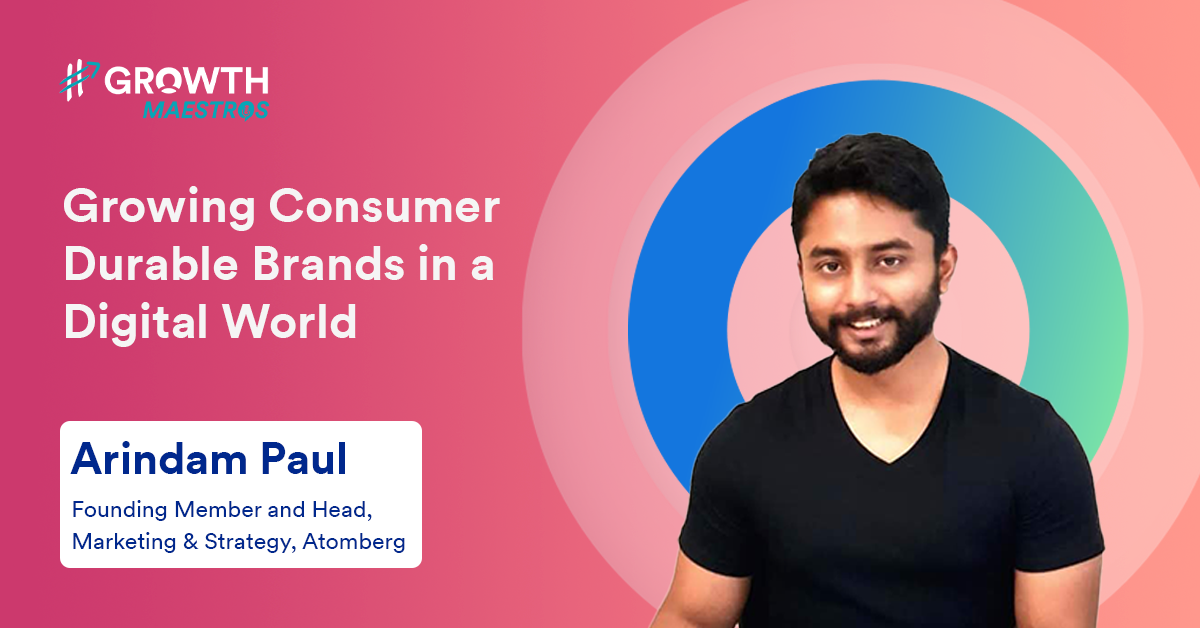
Reading Time: 9 minutes
Editor’s note: D2C is not a simple way for retail brands to take but we see many brands opting for it. Some of these brands are doing pretty well too. So what about the brands that are still struggling to get to their first 10 million milestone?
I got the opportunity to interview one such D2C expert who believes a balanced organic and paid approach is the most successful growth strategy. He’s implemented this strategy for Atomberg and has some exciting insights to share. Please welcome Arindam Paul whose passion and expertise in marketing and digital growth have helped him strengthen brands like Atomberg and Pidilite.
Atomberg as a Consumer Durable Brand
1. Arindam, before we deep dive into Atomberg’s successful growth story, let’s just talk about Atomberg itself. Our readers would want to know what Atomberg as a D2C brand is all about—how it came to be what’s the vision behind launching a niche consumer durable, and what’s the brand USP?
Consumer Durables in India hasn’t seen a lot of India-specific innovation over the last few decades. And within consumer durables, fan as a category was even worse when it comes to innovation. Minor decorative changes were celebrated as innovation. We strongly felt that the Indian consumers, with more disposable income, deserved much better. This was also our concept behind changing the ubiquitous induction motor that runs ordinary fans with a BLDC motor.
The BLDC motor is a smart motor and reduces power consumption by almost 65%. This is at the heart of all our innovations (all kinds of fans and very soon to be launched mixer grinders).
The products have multiple USPs. The fans are energy efficient (consumes 65% less electricity which translates to an annual saving of up to Rs 1500), smart (controlled by remote, voice, app), and have a unique and minimalist look. This combination is what has helped us in disrupting the category.
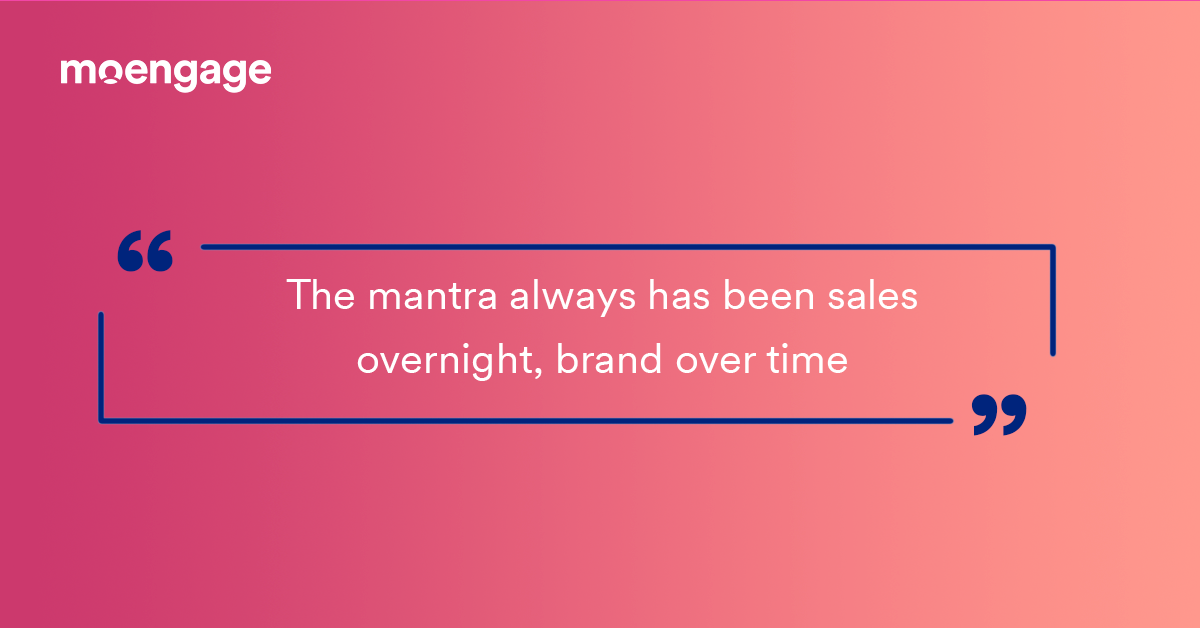
As a brand, we stand for unlocking solutions to real and at times invisible problems using technology. In fans, the inefficient induction motors and the subsequent high bills were an invisible problem. For those who wanted smarter homes with minimalist looks, the current products never solved their needs. We solved all of these problems using our expertise in BLDC motor technology and industrial design. In the future, we intend to do the same in many more categories.
2. We have read about Atomberg’s steady growth and success in the last year. We have read some of the interesting aspects of how this growth was achieved across your and the brand’s social media handles. But what we would like to know is the strategy behind making Atomberg a successful brand?
There are two parts to being a successful brand. The first one – how many consumers know about the brand. The second one – what do they know about the brand.
The first part is to a big extent, the function of how long you have been in existence, how deep a distribution you have, and how much you are spending on media.
The second part is most important for startups like ourselves who are just a few years into the journey of building the brand. If 100 consumers know about your brand, and all of them have a different association with the brand, then as a brand you have failed to communicate. This happens when you aren’t consistent with your product philosophy, customer experience, and communication
So, the first thing is to remain consistent in your core communication, product philosophy, and customer experience. Now, to remain consistent, you will need to clearly define a few things. First of all, you would need to define what the core of your brand is. It is the central idea that drives the brand. For us, it is about unlocking solutions to real problems. It defines all our product decisions.
The second thing is to define the brand pillars. These are areas on which you build the brand. For us, it is about staying customer first and giving a 10x better customer experience.
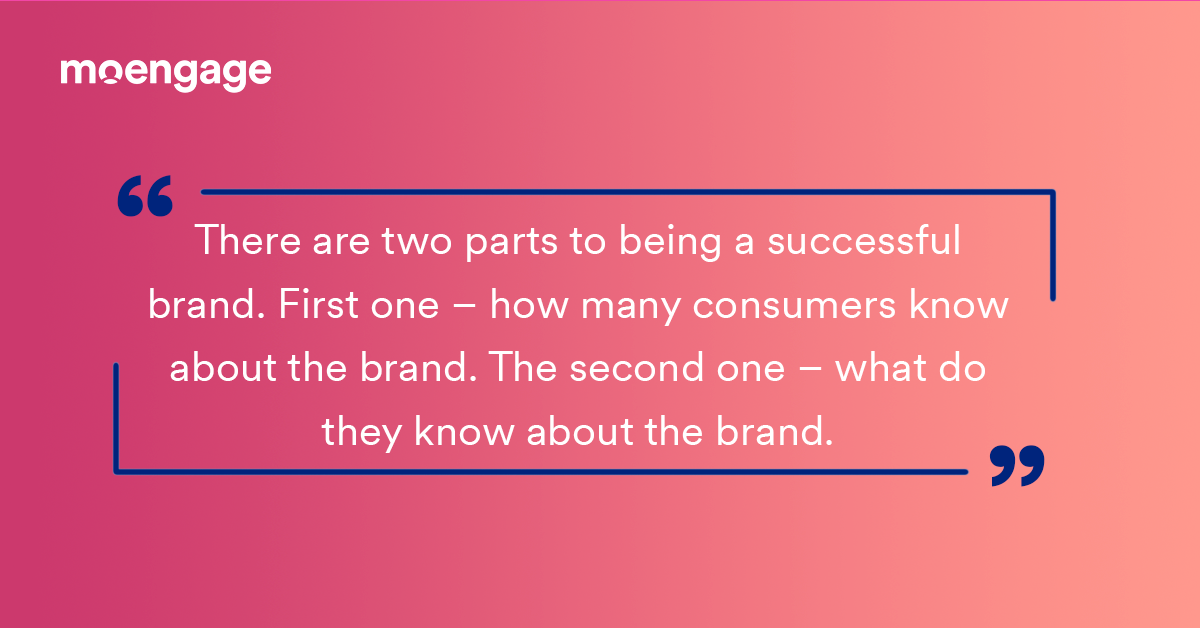
The third thing is brand positioning. Here we need to be very clear that the brand transcends the product. For us again, we want to be known for questioning the status quo across categories and want to be known for solving real problems using technology.
So, you would see all of these reflected in our communication.
- Logo shows an unlocked lock;
- Brand line, “Why Not” also reflects the brand ethos; and
- TV commercials and all our digital communication are also in line with our positioning.
Now, once you sort out the “what” you want consumers to associate the brand with, you then move to “How do you get more consumers to know about the brand?”
For us again it was a mix of avenues. The mantra always has been “sales overnight, brand over time”. There has been a strong focus on mid/bottom-funnel performance marketing, along with marketing automation to get consumers from leads to the purchase stage. E-commerce ads like Amazon and Flipkart ads have also been key to reaching the in-market audience.
We complemented this with top-funnel avenues like digital video (YouTube), social, and PR. Once we reached a certain scale, we initiated our TV ads as for any mass premium brand TV is still the cheapest way of building reach and awareness
Deep-dive into Atomberg’s Success Story
3. What type of campaigns did the team focus on to gain reach and conversion? If you can deep dive a little on various engagement campaigns and social campaigns (organic or paid).
I will take one step back here and go on the purchase journey. For any marketing campaign to be successful, everything needs to be aligned to the purchase journey. At different stages of the purchase journey, the communication and channel choices are different.
For fans or for any consumer durable, the purchase journey is clearly divided into 3 parts:
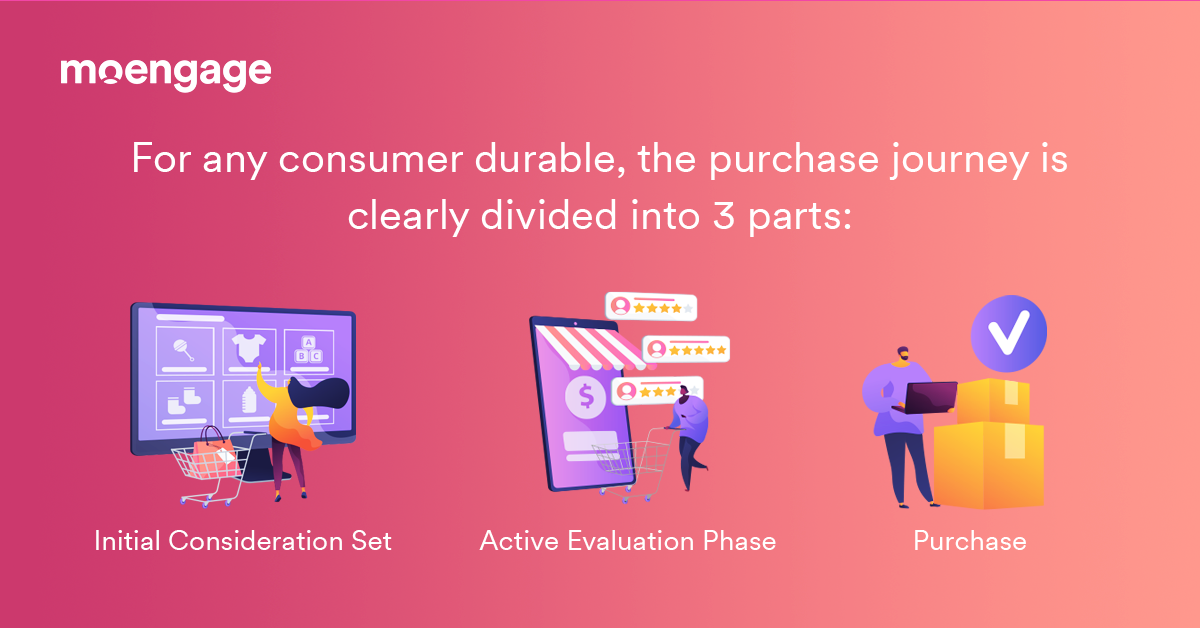
Whenever the consumer becomes aware of their need for the category (for fans it is when you move to a new house, renovate an existing house, or your fan stops working), there are a set of brands that you immediately think of. These brands form the initial consideration set for the consumer.
If you want to get a significant share, then you should definitely plan to be amongst the initial consideration set for your consumers. This means being regularly visible to your core TG, even when they are not in the purchase journey. This is what we mean by top-of-funnel advertising. We have extensively used YouTube to solve this.
The second is the active evaluation phase. This is when consumers are actively looking for your category and are already in market. So, we run campaigns across Google (search, display, Youtube) and Facebook targeting this in-market audience. And once they click on the ad and come to the landing page, we have lead magnets to capture the lead. Following this, there are specific remarketing ads shown to them across Google Display and Facebook. There is marketing automation across mails and WhatsApp to answer all their possible doubts/queries and nudge them to purchase.
The last phase is the purchase phase. Here, we rely completely on bottom-funnel campaigns like Amazon and Flipkart ads as a good chunk of the searches are initiated and purchases are completed in those platforms. Amazon today has a very evolved advertising platform and gives you multiple options to reach basis keyword searches, interest, products browsed, etc. They have consistently given us a very high ROI.
4. You mentioned paid ads and ROAS, which directly means more investment. However, from a D2C industry perspective, how feasible do you think it is to invest more to gain more reach and conversions? You know, because most D2C brands are not well-known across their target audience, especially for a consumer durable brand like yours, does it make sense to spend more and risk ROI.
Yes, this is a very important parameter.
In mid- or bottom-funnel performance marketing, there are no economies of scale. In fact, it is the opposite. So, how it usually works is you experiment with a few audience segments/creatives/landing pages for the initial few months. At that point, ROAS is low. Then as you get more data and more learnings from the campaigns, your targeting improves, and so do your creatives and landing pages. This is the point your ROAS is high.
Everything seems hunky-dory at this point in time. But as soon as you start scaling, beyond a certain point, your ROAS again starts dipping. This happens because you have already exhausted your core in-market early adopter TG and are now showing ads to consumers who are less likely/need more convincing to purchase your products.
This is the point when you need to reduce your dependence on mid- and bottom-funnel paid ads. If you continue relying on only these paid ads at this point to scale, while you might improve the topline, but your bottom line will take a big hit as ROAS will keep falling the more you spend.
The only ways to counter this are:
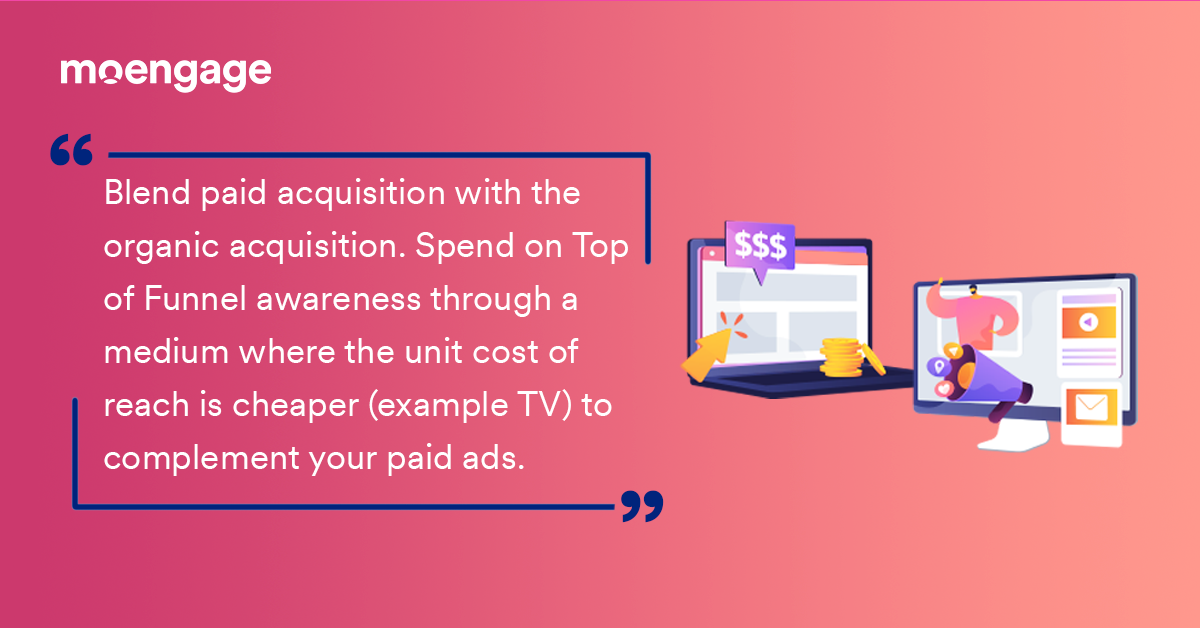
In our case, we got organic acquisition through Amazon SEO, Google SEO (for specific keywords), repeats, and most importantly Word of Mouth.
5. There’s another aspect of your strategy that you spoke about – strong SEO. Can you elaborate on how Atomberg executed a string SEO strategy?
SEO is not easy. It takes a lot of time, but if done right, totally worth it. In SEO, our first strategy was to divide keywords into two types:
- Generic Keywords(like Fans, Ceiling Fans etc): These are high-volume keywords. But at the same time, the competition is extremely high as the sites that rank on top for these keywords are E-commerce websites like Amazon, Flipkart, etc.
- Specific Keywords (like BLDC fans, smart fans, remote-controlled fans): These are keywords for which we already have the exact same product. These were relatively low volume, but easy to rank and high converting keywords.
Since we had limited bandwidth, we decided to focus on the specific keywords, and within one year we were ranking on #1 or #2 for all of them. This gave us a steady source of organic revenue.
For generic keywords, we still are not able to beat the big E-commerce players. But we still get some traffic for those keywords as we rank on the first page for many of them.
Retention Strategies for Consumer Durable Brands
6. These strategies we discussed is around creating a strong customer base and grow initial conversions, so let’s talk about repeat purchase. Atomberg offers consumer durables whose repeat purchase cycle is longer than your usual consumer durables. Now how do you strategize to grow your repeat purchases?
Repeats are very important for most D2C categories. But as you rightly mentioned, the repeat cycle is very high for us.
So, instead of trying to optimize for repeats, we focus on a few fundamentals that ensure repeats happen when the consumer is again in the purchase journey.
The fundamentals that we focus on are:
- Exemplary After Sales Service: We treat after-sales service as a key part of our marketing. In the unfortunate event of a fan not working properly, we go out of our way to not just get it corrected but delight the customer.
- A great unboxing experience that can help trigger word of mouth.
- A superior customer experience led by the product and supported by all other aspects of the brand.
This ensures that almost 10% of our sales happen through word-of-mouth recommendations. It also ensures that our happy customers come back to us again whenever they need another fan for their homes. We are sure this will also lead many customers to try our next category of appliances whenever we launch them.
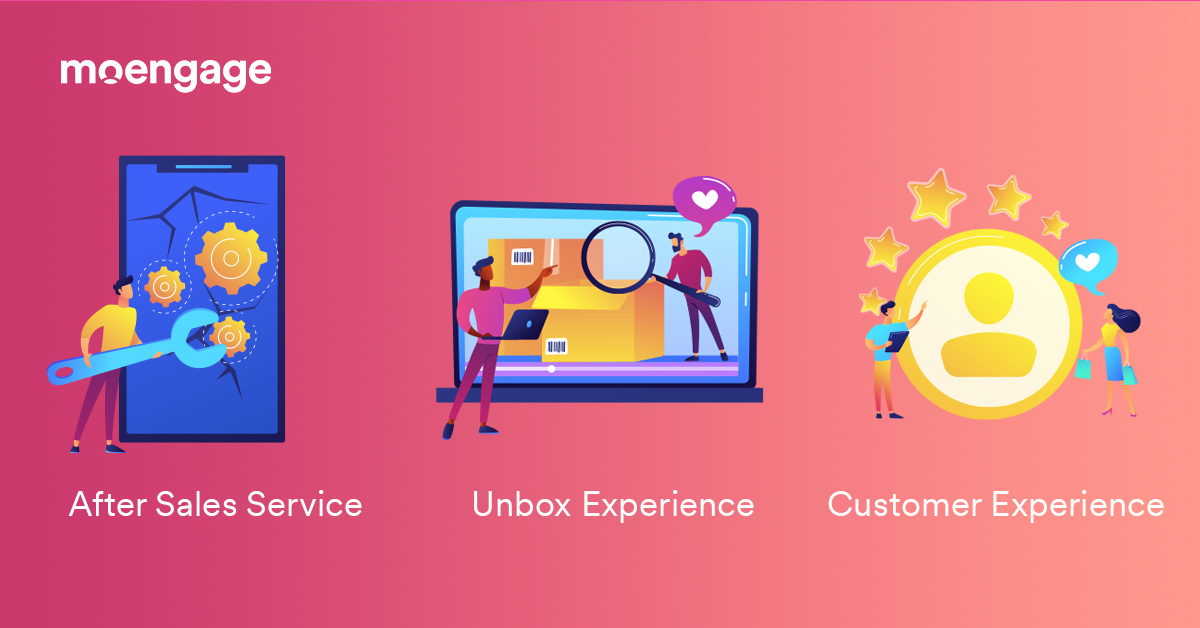
7. Now that we have covered all the aspects of a purchase journey, do you think there are any other aspects that a D2C brand can focus on to full-proof its growth journey?
Other than what we spoke about, there are a few things that a D2C brand should focus on:
- Being closer to the consumer: Talk to your customers very regularly. They will help you in identifying any gaps that still exist in your product and otherwise remains in blind spots. Having access to all of your end customers is D2C’s biggest unfair advantage. Use it to the fullest.
- Expanding omnichannel: All brands that start as D2C and have aspirations to scale significantly will have to expand offline at some point. Again having a scaling D2C business before expanding offline is another unfair advantage. You already know which cities (and even pincodes) have the most demand. You know why consumers buy and which SKUs sell most in which regions. Use all of this information judiciously to begin your offline expansion journey. At Atomberg, we are glad that we started this journey three years back and are now reaping the benefits of the same
Thank you, Arindam, for sharing your thoughts and advice. I’ve learned a lot about driving growth through the organic + paid approach. I’ve also understood this is one of the most reliable growth strategies that can offer long-term benefits. I’m sure our readers will benefit from the insights you’ve shared.
Readers, you can connect with Arindam for more tips and advice around D2C, growth, and customer retention tactics.













